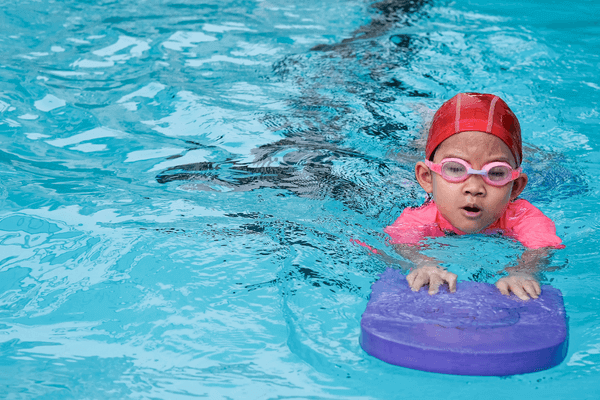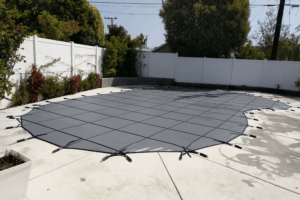
Pool Area Maintenance Tasks You Shouldn’t Skip
Even diligent pool owners miss key maintenance steps. Use this checklist to catch commonly forgotten tasks and keep your pool area safer and more efficient year-round.
Home > Swimming for Beginners: Safety and Equipment Checklist

If you want to start your swimming lifestyle with a safer swimming pool, you need the right swimming equipment for beginners to learn and develop their skills with. From swimming safety equipment that keeps them safer to the accessories that help refine technique or add enjoyment to your pool time. Every swimmer started someplace, and beginners approach swimming with different levels of personal water experience, training, and preparation. Whether you’re new to swimming or new to having a home pool you can swim in whenever you want, we’ll help you make sure you have the right safety and swimming equipment for beginners who are more than ready to get their feet wet.

As your swimming skills evolve, it’s important to always put safety first. Accidental drowning injuries send tens of thousands of victims to emergency rooms and doctors’ offices each year, and over 4000 lives will be lost to these largely preventable tragedies. Swimming safety equipment is a great first step to protecting both your own life and the lives of those you share the pool with, but equipment alone is not a solution. You need to cultivate a safety mindset that can identify potential hazards, help you mitigate them, and help you understand how to respond during emergency situations where seconds matter. If you want a safer swimming pool, it starts with the decisions you make as a beginner choosing the swimming equipment and training to protect yourself and your loved ones.

Getting the most from your pool will mean giving your swimming skills time to evolve. You have swimming safety equipment helping to keep you protected, and now you need the right beginners swimming equipment. As skills develop, many swimmers find that they’re ready to leave their gear behind, while others still use it from time to time to get more enjoyment out of their pool activities.
Your local All-Safe Pool installer is your go-to source for a safer swimming pool area. Make sure your beginner swimmers are safe as well as anyone who visits your pool. When you request a no-obligation estimate, an experienced professional will come to your home, take measurements, and talk to you about your pool uses and safety needs. Then you’ll get a written summary of your options with clearly laid-out costs so you can make an informed decision about your pool’s safety. Take the first step toward protecting your friends, family, and loved ones. Get your free quote from an independent installer today.

Even diligent pool owners miss key maintenance steps. Use this checklist to catch commonly forgotten tasks and keep your pool area safer and more efficient year-round.

Learn the most common pool winterizing mistakes and how to avoid them for a safer, cleaner backyard during the off-season.

Mesh pool covers offer reliable winter protection by keeping out debris and preventing accidents. Learn why they’re a smart choice for safety and peace of mind.
Enter your zip code to locate an independent installer in your area
Enter your zip code to locate an independent installer in your area

Due to the many variations in monitors, phones, and browsers, color samples and product examples may appear different on different screens. Computers and mobile devices are not all calibrated equally and color reproduction on the Internet is not precise. The same is true for printed items such as brochures and other sales literature.
In addition, the colors of our products photograph differently under different lighting conditions. For example, photos taken in full sunlight will vary from photos taken on a cloudy or overcast day. Similarly, shadows from nearby objects can affect the color and transparency of our products. If a precise color or specific shade is important, please inspect the actual color of your product prior to installation.
Many of our products’ materials are not available through typical stores and vendors and therefore must be custom manufactured specifically for our use. In order to control costs and provide you with the best value possible, our raw materials are produced in large batches and can often take several months to receive. The colors of our materials can, and often do, vary slightly from batch to batch. Although we make every effort to minimize color variations, we cannot be responsible for these differences when they occur. If a precise color or specific shade is important, please inspect the actual color of your product prior to installation.
For example, we use the name “putty” to describe some of our products. Your idea of the color “putty” may be different than someone else’s idea of “putty”. In addition, products may have the same color name but may not be the exact same color. For example, we have different shades of “black”. Please do not order using color names as your only guide. If a precise color or specific shade is important, please inspect the actual color of your product prior to installation.
If it is important that your product be an exact color or shade, it is highly recommended that you inspect the actual product prior to its installation and address any concerns with your local independent installer. Most independent installers do not offer refunds or accept returns due to color variations.